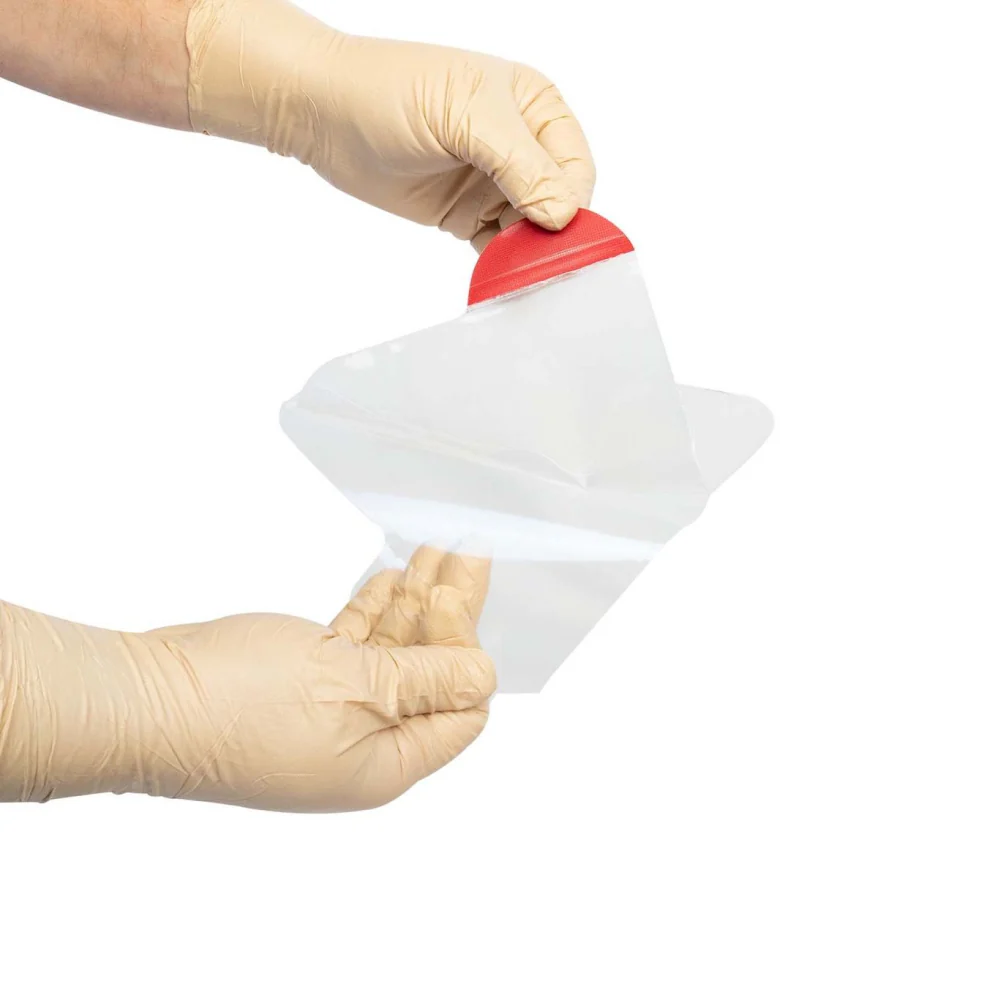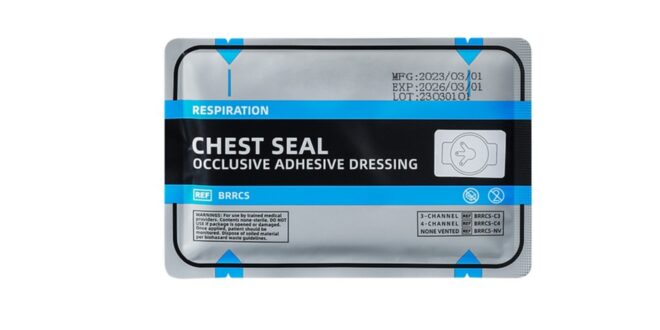Gunshot wounds present unique challenges in both emergency and clinical settings. The right care and immediate intervention can save lives. One of the most critical components in managing gunshot wounds is the use of occlusive dressings. These specialized dressings serve an essential function in controlling certain types of wounds by preventing air from entering the body cavity while managing blood loss.
Proper use of occlusive dressings can be the difference between life and death, particularly when dealing with open chest wounds, known as sucking chest wounds. This article explains why occlusive dressings are indispensable for treating gunshot wounds.
Key Points
- Occlusive dressings block air from entering chest wounds.
- Their primary role is to prevent lung collapse caused by sucking chest wounds.
- Immediate application can stabilize a patient before more advanced care.
- Improper use can worsen a patient’s condition.
- Not all wounds require occlusive dressings, so assessment is key.
1. What Is Occlusive Dressing?
Occlusive dressings are specialized medical bandages designed to block air from entering an open wound. This becomes crucial when treating chest wounds caused by gunshots, where open injuries create a direct passage for air to enter the chest cavity. This can cause serious complications like a collapsed lung (pneumothorax) or tension pneumothorax.
When a gunshot wound affects the chest, an occlusive dressing seals off the opening, stopping air from being drawn into the wound. This helps stabilize the victim’s breathing and reduces the chance of further damage to the lungs. For those new to treating such injuries, using an occlusive dressing for gunshot wounds can seem daunting. A detailed guide, such as the one found at Yeyetac, offers helpful steps on how to choose and apply these essential dressings.
Not all wounds from a gunshot involve the chest, but when they do, occlusive dressings become a crucial part of the first aid response. They help control airflow into the chest, preventing the development of complications. These dressings are often adhesive and made from materials like plastic or petroleum jelly gauze. Some include a valve to allow air to escape from the chest while preventing it from entering.
2. Why Is Occlusive Dressing Essential for Gunshot Wounds?
The primary reason lies in the risk of pneumothorax, which occurs when air enters the pleural space between the lung and the chest wall. When air fills this space, it prevents the lung from expanding fully, which can cause breathing difficulties and potentially collapse the lung.
Gunshot wounds create an unnatural opening in the body. Air drawn into this opening can cause serious complications that lead to respiratory failure. An occlusive dressing forms an airtight seal, immediately addressing the issue. It helps prevent further air entry and reduces the chances of the wound worsening.
Additionally, it helps manage blood loss by covering the wound and protecting it from external contaminants. The airtight seal also minimizes the risk of infection. In many cases, the application of an occlusive dressing can stabilize a patient long enough to reach advanced medical care, where further intervention can be performed.
3. Types of Occlusive Dressings for Gunshot Wounds

Several types of occlusive dressings are available on the market, each designed to serve a specific function. Some popular options include:
- Adhesive dressings ─ These stick directly to the skin around the wound. They are convenient and quick to apply, making them suitable for emergency scenarios.
- Non-adhesive dressings ─ These rely on external pressure to stay in place, which can be applied using bandages or tape. They are typically used when the skin around the wound is too compromised for adhesive options.
- Valve dressings ─ These are advanced dressings featuring a one-way valve that allows air to escape from the chest without letting more air enter. This prevents a build-up of pressure inside the chest.
Each type of occlusive dressing has advantages depending on the situation. In most cases, it is advisable to use an adhesive dressing for quick response, while valve dressings are ideal when managing more serious gunshot wounds involving air pressure within the chest cavity.
4. Steps to Apply Occlusive Dressings on Gunshot Wounds
Applying occlusive dressings for gunshot wounds requires swift and precise action. Here are the basic steps:
- Assess the wound ─ Before applying any dressing, it is important to identify the nature of the wound. Determine if it is a sucking chest wound or another type of wound that could lead to a pneumothorax.
- Prepare the dressing ─ Choose an occlusive dressing that fits the wound size. If a commercial occlusive dressing is unavailable, any plastic or airtight material can work in emergencies.
- Seal the wound ─ Place the dressing over the wound, ensuring that the entire opening is covered. Make sure the dressing sticks well around the edges of the wound to form an airtight seal.
- Monitor the patient ─ After applying the dressing, monitor the patient for any signs of respiratory distress. If they show signs of increasing difficulty breathing, it may indicate tension pneumothorax, which requires immediate medical attention.
- Transport to medical facility ─ Always seek advanced medical care after applying an occlusive dressing. Gunshot wounds are complex injuries that require surgical intervention and further care.
5. When Not to Use Occlusive Dressings

Occlusive dressings are not appropriate for all types of gunshot wounds. Applying them to the wrong kind of wound can cause unnecessary complications. Below is a list of wound types where an occlusive dressing should never be used:
- Abdominal gunshot wounds ─ Applying an occlusive dressing to abdominal wounds can trap air or fluids, worsening the situation. A standard bandage is more suitable here.
- Limb gunshot wounds ─ For gunshot injuries involving the arms or legs, blood control is the priority, and using an occlusive material can cause complications.
- Wounds without air exposure ─ If the injury does not involve the chest or other areas where air can enter, there is no need for an occlusive dressing. Misapplication can result in improper wound management.
- Head wounds ─ Head injuries often require different types of treatment, and they might worsen pressure buildup or fail to address bleeding effectively.
- Wounds already sealed ─ If a wound has naturally closed or been properly dressed with other medical materials, adding an occlusive layer can interfere with the healing process or complicate care.
In all these cases, misusing it can hinder proper healing, lead to complications, or worsen the patient’s condition. Proper assessment is key to ensuring the dressing is applied only when necessary.
FAQ
1. Can occlusive dressings stop bleeding?
They can manage bleeding by covering the wound, but their primary function is to block air, not to control blood flow.
3. How quickly should an occlusive dressing be applied?
It should be applied as soon as possible after identifying a chest wound to prevent air entry.
4. Are there alternatives to commercial occlusive dressings?
In emergencies, plastic wrap or other airtight materials can be used to create a temporary occlusive dressing.
Conclusion
Occlusive dressings are life-saving tools when dealing with gunshot wounds, particularly those affecting the chest. Their ability to seal off air entry and prevent pneumothorax makes them an essential part of any first aid kit designed for treating such injuries. Prompt application and proper use can stabilize a victim and provide enough time for them to reach advanced medical care.
 Jewel Beat
Jewel Beat

